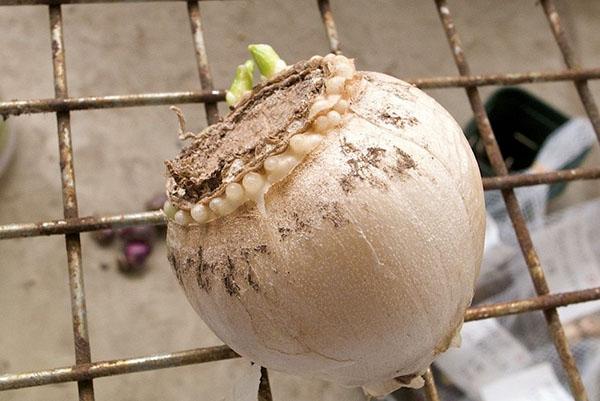Propagation of hyacinths in an efficient industrial way
 Hyacinths are unpretentious to the conditions of detention. These flowers, like all bulbous flowers, can rot and die only with excessive watering and stagnant water. Sandy loam soil with the addition of low peat is well suited for growing hyacinths. Hyacinths are amenable to selection and distillation. Like any bulbous plant, these flowers can be grown for any holiday, including New Years and Christmas. Hyacinths were grown in large quantities 200 years ago. Two-color varieties of this flower were bred.
Hyacinths are unpretentious to the conditions of detention. These flowers, like all bulbous flowers, can rot and die only with excessive watering and stagnant water. Sandy loam soil with the addition of low peat is well suited for growing hyacinths. Hyacinths are amenable to selection and distillation. Like any bulbous plant, these flowers can be grown for any holiday, including New Years and Christmas. Hyacinths were grown in large quantities 200 years ago. Two-color varieties of this flower were bred.
A simple industrial method can be used to propagate hyacinths. When propagating from the mother bulb, up to 200 babies are obtained from one plant. This method of propagation of bulbous plants is the fastest.
Reproduction of hyacinths in nature
In nature, hyacinth builds up a baby for a very long time. It takes five years for one adult bulb to form. With an excess of nutrients, the mother's bulb forms a small tubercle similar to a scale. This process, over time, grows and separates from the mother plant. During the formation of a new bulb, hyacinth is vulnerable to fungal diseases. Since all the nutrients are spent on the formation of a new plant, hyacinth does not bloom, and its natural immunity decreases.
Reproduction of hyacinths at home
To propagate hyacinths at home, you will need a dormant bulb. On its bottom (the part where the roots grow), you need to make several shallow cuts.
It is necessary to cut the hyacinth bulbs only to natural thickening, that is, by a third of the diameter.
Next, the bulbs are placed upside down in a plastic container. 4 cm of water is poured into this container and covered with glass. Then the bulbs are placed on an electric stove. It is necessary to maintain a water temperature of +30 for a week.ABOUTC. For another two weeks, the water is constantly cooled to +10ABOUTFROM.
After three weeks, a large number of children will appear in the cuts of the bottom. When you notice their appearance, remove the glass from the container and turn the bulbs to their normal position. Drain the water and fill the container with soil.
In the spring, the bulbs with children are transplanted into open ground. This is done for five years, until full-fledged bulbs are formed from the children. This propagation takes five years, but you end up with over 200 ready-made bulbs per plant.